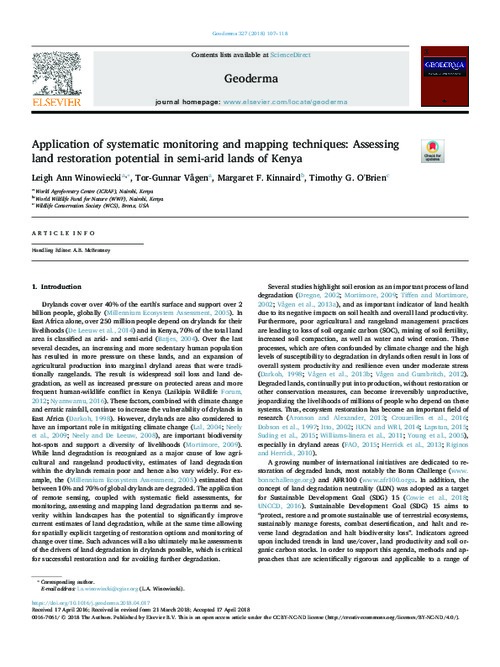Elsevier is a world-leading provider of information solutions that enhance the performance of science, health, and technology professionals.
All knowledge begins as uncommon—unrecognized, undervalued, and sometimes unaccepted. But with the right perspective, the uncommon can become the exceptional.
That’s why Elsevier is dedicated to making uncommon knowledge, common—through validation, integration, and connection. Between our carefully-curated information databases, smart social networks, intelligent search tools, and thousands of scholarly books and journals, we have a great responsibility and relentless passion for making information actionable.
Members:
Resources
Displaying 41 - 45 of 1605Smallholder farmers’ crop combinations under different land tenure systems in Thailand: The role of flood and government policy
Land use decision making is influenced by various factors including tenure security, natural disasters and farm characteristics. Smallholder farmers operate under different land tenure systems, which influences their crop combinations. This paper investigates smallholder farmers’ crop combinations under different land tenure systems in Thailand in the context of the 2011 flood and government policy on rice.
Earthworms regulate plant productivity and the efficacy of soil fertility amendments in acid soils of the Colombian Llanos
The Llanos region of Colombia represents one of the last large agricultural frontiers and is undergoing a rapid conversion from naturalized savanna to intensive agriculture with high agrochemical inputs and tillage. This massive land-use conversion has considerable impact on ecosystem services and biodiversity, particularly soil macrofauna, yet the full implications of this land-use shift for long-term agroecosystem productivity are poorly understood.
Application of systematic monitoring and mapping techniques
Drylands cover over 40% of the earth's surface and support over 2 billion people, globally (Millennium Ecosystem Assessment, 2005). In East Africa alone, over 250 million people depend on drylands for their livelihoods (De Leeuw et al., 2014) and in Kenya, 70% of the total land area is classified as arid- and semi-arid (Batjes, 2004). Over the last several decades, an increasing and more sedentary human population has resulted in more pressure on these lands, and an expansion of agricultural production into marginal dryland areas that were traditionally rangelands.
Independent data for transparent monitoring of greenhouse gas emissions from the land use sector – What do stakeholders think and need?
The agriculture, forestry and other land use (AFOLU) sectors contribute substantially to the net global anthropogenic greenhouse gas (GHG) emissions. To reduce these emissions under the Paris Agreement, effective mitigation actions are needed that require engagement of multiple stakeholders. Emission reduction also requires that accurate, consistent and comparable datasets are available for transparent reference and progress monitoring.
Actors, networks, and globalised assemblages: Rethinking oil, the environment and conflict in Ghana
This article draws on actor network theory (ANT) and assemblage to interrogate the potential future manifestation of open conflicts due to unresolved latent local socio-economic and political grievances associated with oil exploitation near fishing communities and the implications of oil-related environmental degradation on local livelihoods in the Western Region of Ghana.





